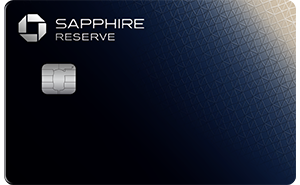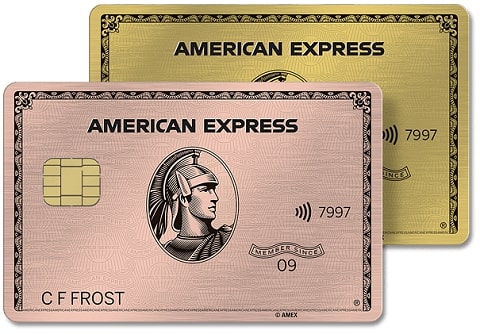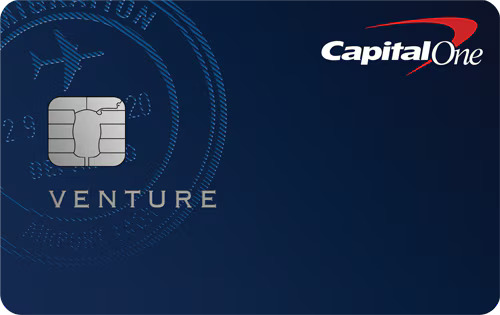Chase Sapphire Reserve Review: A High-End, High-Maintenance Card
The Bottom Line
4.7
With a big welcome offer, elevated rewards on travel and dining, hundreds of dollars in annual credits and other perks, it could be a good choice for frequent travelers who are willing to do some work.

Rates, fees and offers
Rates, fees and offers
Annual fee
$795
Rewards rate
1x-8x
Bonus offer
Earn 100,000 bonus points + $500 Chase Travel℠ promo credit after you spend $5,000 on purchases in the first 3 months from account opening.
Intro APR
N/A
Ongoing APR
APR: 20.24%-28.74% Variable APR
Cash Advance APR: 29.24%, Variable
Penalty APR: Up to 29.99%
Balance transfer fee
Either $5 or 5% of the amount of each transfer, whichever is greater.
Foreign transaction fee
$0
More details from Chase
More details from Chase
- Earn 100,000 bonus points + $500 Chase Travel℠ promo credit after you spend $5,000 on purchases in the first 3 months from account opening.
- Get more than $2,700 in annual value with Sapphire Reserve.
- Earn 8x points on all purchases through Chase Travel℠, including The Edit℠ and 4x points on flights and hotels booked direct. Plus, earn 3x points on dining worldwide & 1x points on all other purchases
- $300 annual travel credit as reimbursement for travel purchases charged to your card each account anniversary year.
- Access over 1,300 airport lounges worldwide with a complimentary Priority Pass™ Select membership, plus every Chase Sapphire Lounge® by The Club with two guests. Plus, up to $120 towards Global Entry, NEXUS, or TSA PreCheck® every 4 years
- Get up to $150 in statement credits every six months for a maximum of $300 annually for dining at restaurants that are part of Sapphire Reserve Exclusive Tables.
- Count on Trip Cancellation/Interruption Insurance, Auto Rental Coverage, Lost Luggage Insurance, no foreign transaction fees, and more.
- Get complimentary Apple TV+, the exclusive streaming home of Apple Originals. Plus Apple Music - all the music you love, across all your devices. Subscriptions run through 6/22/27 - a value of $250 annually
- Member FDIC
Pros and Cons
Pros
High rewards rate
Luxury perks
Premium travel protections
Transfer partners
Primary rental car coverage
Cons
High annual fee
Requires excellent credit
Detailed Review
For years, the Chase Sapphire Reserve® has stood out as one of the best premium travel cards available, thanks to features such as an annual $300 travel credit and bonus rewards that can be transferred at a 1:1 ratio to several loyalty programs. For avid travelers who can cash in on the card’s numerous credits, the Chase Sapphire Reserve® can be a good deal — even with its $795 annual fee.
However, to earn the card’s highest rewards rates, you’ll have to make travel or dining purchases through Chase's travel portal. Plus, the card was revamped in June 2025 to add in a slew of “coupon book” benefits, making it more complicated to manage.
While the card offers excellent overall value for those who spend heavily on travel and dining, if you can't take advantage of its more niche benefits, a different travel card could be a better fit.
Chase Sapphire Reserve®: Basics
Card type: Travel.
Sign-up bonus: Earn 100,000 bonus points + $500 Chase Travel℠ promo credit after you spend $5,000 on purchases in the first 3 months from account opening.
Annual fee: $795.
Ongoing rewards:
8 points per dollar spent on travel bookings purchased through Chase, including flights, hotels, rental cars, cruises, activities and tours.
4 points per dollar spent on bookings made directly with an airline or hotel.
3 points per dollar spent at restaurants, including eligible food delivery.
1 point per dollar spent on all other purchases.
Through Sept. 30, 2027: 5 points per $1 spent on Lyft.
Foreign transaction fees: None.
Other benefits:
Up to $300 a year in statement credit automatically applied to travel purchases.
Complimentary Priority Pass Select airport lounge membership.
Access to Chase's Sapphire Lounges in select airports.
Multiple hotel and airline transfer partners.
TSA PreCheck, Global Entry or NEXUS credit, worth up to $120.
Up to $500 in annual credit (in the form of two $250 credits) for stays with The Edit, a collection of 1,000+ high-end hotels and resorts.
“Sapphire Reserve Exclusive Tables” program, which grants cardholders access to reservations at popular restaurants across the country. Plus get a $300 annual dining credit (in the form of two $150 credits) for restaurants that are part of Sapphire Reserve Exclusive Tables.
Up to $300 in statement credit for StubHub, in the form of two $150 credits a year.
Up to $250 toward Apple TV+ and Apple Music subscriptions.
Up to $120 in credit toward Peloton membership, available at $10 a month, plus you earn 10 points per dollar on eligible Peloton purchases.
Primary rental car coverage of up to $75,000 for theft and collision damage.
Trip delay reimbursement.
Trip cancellation or interruption insurance.
Complimentary IHG One Rewards Platinum Elite status through Dec. 31, 2027.
Up to $10 a month in Lyft credit through Sept. 30, 2027.
Free DashPass subscription for a year, plus two $10 promos each month on non-restaurant DoorDash orders. Reserve cardholders also receive a $5 monthly credit for restaurant orders.
Additional benefits after you spend $75,000 each year, including IHG One Rewards Diamond Elite Status, Southwest Airlines A-List Status, a $500 credit for Southwest bookings through Chase, and a $250 credit for purchases through The Shops at Chase.
Terms apply; activation may be required.
How much is a point worth?
Chase Ultimate Rewards® points earned on this card are worth between 1 and 2 cents each when redeemed for travel booked through Chase. The card's "Points Boost" feature provides rotating flight and hotel offers, through the Chase travel portal, that allow you to redeem points at a value of up to 2 cents each. All other point redemptions for travel bookings through Chase are worth 1 cent each.
Cardholders can also transfer points to Chase's airline and hotel partners at a 1:1 value.
Otherwise, points are worth 1 cent each when redeemed for cash back. Gift cards and merchandise are also redemption options, but point values may vary for those.
Existing Chase Sapphire Reserve® cardholders will gain access to the statement credits mentioned above on Oct. 26, 2025. If you applied for the Chase Sapphire Reserve® before June 23, 2025, points earned before Oct. 26, 2025, will be able to be redeemed for travel through Chase at a value of 1.5 cents per point until Oct. 26, 2027. However, points earned before Oct. 26, 2025, will also be eligible for Point Boost offers, making them worth up to 2 cents per point.
Compare to Other Cards

Benefits and Perks
Big sign-up bonus
The Chase Sapphire Reserve® features the following generous sign-up bonus: Earn 100,000 bonus points + $500 Chase Travel℠ promo credit after you spend $5,000 on purchases in the first 3 months from account opening.
Bonus rewards
The Chase Sapphire Reserve® offers rich bonus rewards in a variety of travel- and food-friendly categories, though tracking them all might take some effort.
Travel and dining purchases made through the Chase portal will get you the card's highest rewards rates, which is lucrative for those who spend heavily in this category and don't feel limited by the requirement to book through Chase.
Even for travel and dining purchases not made through the issuer, cardholders will still earn bonus rewards.
Additionally, through Sept. 30, 2027, you can earn a total of 5 points per $1 spent on Lyft, making ridesharing, a common travel expense, more rewarding.
Travel statement credit of up to $300
While many premium cards offer airline fee credits for baggage fees and other select purchases, the travel credit of up to $300 on the Chase Sapphire Reserve® covers a much broader range of travel purchases, including taxi rides, campground fees and train fares.
Because this credit is applied automatically, taking advantage of it is effortless. Use this card to pay for a $20 Uber ride and — poof! — that travel credit is applied to your credit card statement right away.
If you know you'll use this credit every year, it effectively defrays the card's massive annual fee, making it a little more palatable.
Airport lounge access and Global Entry/TSA PreCheck/NEXUS reimbursement
With the Chase Sapphire Reserve®, your next layover could be spent in an exclusive lounge with a complimentary cocktail in hand. The card comes with Priority Pass Select membership, with access to over 1,300 airport lounges internationally. Plus, you'll get access to Chase's own Sapphire Lounges. As of June 2025, there are Sapphire Lounge locations in Boston, New York (LaGuardia and JFK), Philadelphia, Phoenix, San Diego and Hong Kong. Upcoming lounge locations include Las Vegas and Los Angeles.
With the card's TSA PreCheck, Global Entry or NEXUS reimbursement, you can also speed through security and get to those swanky lounges a little sooner. The card offers a reimbursement of up to $120 for the application fee for TSA PreCheck, Global Entry or NEXUS once every four years.
Other potentially valuable credits
Beyond the hundreds of dollars in value you can get with the travel credit and TSA PreCheck/GlobalEntry/NEXUS fee reimbursement, the Chase Sapphire Reserve® offers a long list of other credits, adding up to thousands of dollars in value per year:
Up to a $500 credit toward bookings with the 1,000+ hotels and resorts that are part of The Edit, in the form of two $250 credits per year.
Up to a $300 credit when you dine at restaurants that participate in the Sapphire Reserve Exclusive Tables program, in the form of two $150 credits per year.
Up to a $250 subscription to Apple TV+ and Apple Music.
Up to a $300 credit for StubHub and viagogo purchases, in the form of two $150 credits per year.
Up to $120 in credits toward ride shares with Lyft, in the form of $10 monthly credits.
Up to $300 in credits for DoorDash purchases, plus a $120 DashPass membership. The DoorDash credits are in the form of a monthly $5 restaurant promo and two $10 promos to spend on groceries, beauty, electronics and more.
A $120 Peloton credit, in the form of $10 monthly credits.
If you spend $75,000 or more on the card each year, you’ll also get:
A $500 credit for Southwest Airlines flights booked through Chase.
A $250 credit for purchases through The Shops at Chase.
Transfer partners
With the Chase Sapphire Reserve®, you can move points to several other travel loyalty programs at a 1:1 ratio. Transferring points and redeeming them strategically can be incredibly lucrative.
Here are Chase’s transfer partners:
Full list of Chase transfer partners
Airlines
Aer Lingus (1:1 ratio).
Air Canada (1:1 ratio).
Air France-KLM (1:1 ratio).
British Airways (1:1 ratio).
Emirates (1:1 ratio).
Iberia (1:1 ratio).
JetBlue (1:1 ratio).
Singapore (1:1 ratio).
Southwest (1:1 ratio).
United (1:1 ratio).
Virgin Atlantic (1:1 ratio).
Hotels
Hyatt (1:1 ratio).
InterContinental Hotels Group (1:1 ratio).
Marriott (1:1 ratio).
Complementary cards
Like a handful of other Chase cards, the Chase Sapphire Reserve® earns Chase Ultimate Rewards® points. That means if you already have another card in the Ultimate Rewards® family, you can generally transfer points to your Chase Sapphire Reserve®, potentially allowing you to get more value on the points earned.
Say you already have the Chase Freedom Unlimited® , which earns a minimum of 1.5% cash back on purchases, but lacks 1:1 transfer partners and bonuses when redeeming for travel through Chase. When you log into your Chase account, you have the option of moving the rewards earned on that card to your Chase Sapphire Reserve®, where you can then transfer them to partners or book travel for up to 2 cents per point.
The Chase Sapphire Reserve® and its lower-priced sibling, the Chase Sapphire Preferred® Card, have had their rewards, perks and bonuses tweaked over the years as the issuer has worked to keep them at the top of travelers' wallets. See our Chase Sapphire cards news page for a rundown.
Sapphire Reserve vs. Sapphire Preferred
If you're looking at the Chase Sapphire Reserve®, you might also have your eye on its less-expensive sibling, the Chase Sapphire Preferred® Card. Though it lacks the same rich benefits, it has a much lower annual fee of $95.
Which card is the better deal for you depends on your spending. For frequent travelers who can easily use the card’s various credits, the Chase Sapphire Reserve® offers more long-term value. The Chase Sapphire Preferred® Card is a better choice for those who don’t plan on using so many perks but still want a large sign-up bonus and elevated point values.
For a more thorough breakdown of the differences, read NerdWallet's full comparison of these two cards. Here's how they stack up at a glance:
| Empty Table Header | Chase Sapphire Preferred® Card | Chase Sapphire Reserve® |
|---|---|---|
Annual fee | $95. | $795. |
Sign-up bonus | Earn 75,000 bonus points after you spend $5,000 on purchases in the first 3 months from account opening. | Earn 100,000 bonus points + $500 Chase Travel℠ promo credit after you spend $5,000 on purchases in the first 3 months from account opening. |
Rewards |
|
|
Other benefits |
|
|
Learn more |
Drawbacks and Considerations
Sky-high annual fee
The Chase Sapphire Reserve® already pushed boundaries when it cost $550 per year, but $795? In this economy? That’s asking a lot. If you can benefit from the card enough to justify the cost, then it could still be a good fit for you. But if not, other travel cards with lower annual fees are worth a look.
As mentioned earlier, the Chase Sapphire Preferred® Card has a significantly lower annual fee and has the same 1:1 transfer partners as the Chase Sapphire Reserve®, plus a robust sign-up bonus. Although it lacks the most attention-grabbing perks, such as the $300 travel credit, it's ideal for folks looking for a versatile travel card with a lower price.
The Capital One Venture X Rewards Credit Card is a high-end alternative with a comparatively modest $395 annual fee. It offers up to a $300 annual credit for travel booked through Capital One, a reimbursement for the TSA PreCheck or Global Entry fee, an annual 10,000-point bonus and more. There’s also a welcome bonus: Earn 75,000 bonus miles when you spend $4,000 on purchases in the first 3 months from account opening, equal to $750 in travel.
Check out NerdWallet's best credit card deals to see how these cards stack up.
Coupon-book benefits
The long list of available credits adds up to well over the card’s cost, but you need to put in some serious work to squeeze out as much value as possible. Many of the perks are split into monthly or semi-annual credits.
Some only appeal to those who live in, or travel to, specific cities. As of this writing, for example, the Sapphire Reserve Exclusive Tables program has a presence only at select restaurants in just over two-dozen U.S. cities, along with a small handful of cities in Mexico and Canada.
Restrictive bonus rewards
Although the Chase Sapphire Reserve® offers competitive reward rates for travel spending, you’ll be able to get the highest rewards rate only if you make purchases through the Chase portal. This can prove limiting compared with booking flights or renting cars directly with brands, for example.
Moreover, if you're not an avid spender in either of the card’s bonus categories — travel and dining — you won’t get much use out of the card. A cash-back credit card that offers more diverse and flexible rewards options would be a better fit.
Somewhat limited lounge choice
If your go-to airport doesn’t have a Chase Sapphire Lounge or Priority Pass lounge, you'll be missing out on a key benefit of the Chase Sapphire Reserve®. The Capital One Venture X Rewards Credit Card offers a similar alternative: Cardholders also have access to Priority Pass lounges, plus Plaza Premium Lounges and Capital One Lounges.
But if lounge access is a priority for you, a better option might be The Platinum Card® from American Express.
Though it, too, has a high annual fee ($695), this card comes with much broader airport lounge coverage, along with plenty of other top-tier benefits. In addition to giving cardholders Priority Pass Select coverage (once you enroll), the card also offers access to several other lounge networks, including AmEx's own Centurion lounges and Delta Sky Clubs (for folks flying with Delta on the same day). Terms apply.
The Platinum Card® from American Express also offers several other premium benefits and statement credits, including up to $200 in Uber Cash, which can be used toward Uber rides in the U.S. (up to $15 each month, plus a bonus $20 in December). Enrollment is required. Plus, the card comes with a big welcome offer. Terms apply.
How To Decide If It's Right For You
Spending $795 a year on a credit card is a big deal — and probably isn’t an ideal fit if you’re not a frequent traveler. But if you're a jet-setter and can take advantage of its many perks, the Chase Sapphire Reserve® could be worth it.
To view rates and fees of The Platinum Card® from American Express, see this page.
No appetite for actively managing your credit card travel rewards? This card gives you a flat 2 miles per dollar spent on most purchases. Redeem miles to "erase" any travel purchase at a penny per mile. There's a great sign-up bonus, and the annual fee is $95.
Looking For Something Else?
Methodology
NerdWallet reviews credit cards with an eye toward both the quantitative and qualitative features of a card. Quantitative features are those that boil down to dollars and cents, such as fees, interest rates, rewards (including earning rates and redemption values) and the cash value of benefits and perks. Qualitative factors are those that affect how easy or difficult it is for a typical cardholder to get good value from the card. They include such things as the ease of application, simplicity of the rewards structure, the likelihood of using certain features, and whether a card is well-suited to everyday use or is best reserved for specific purchases. Our star ratings serve as a general gauge of how each card compares with others in its class, but star ratings are intended to be just one consideration when a consumer is choosing a credit card. Learn how NerdWallet rates credit cards.
Frequently asked questions
What are the rewards on the Chase Sapphire Reserve®?
What are the rewards on the Chase Sapphire Reserve®?
The Chase Sapphire Reserve® earns 8 points per dollar spent on travel booked through Chase, 4 points per dollar spent on bookings made directly with an airline or hotel, 3 points per dollar on dining and 1 point per dollar everywhere else. But rewards alone aren't enough to justify the hefty $795 annual fee. The card comes with an array of travel perks that can significantly reduce the cost of carrying it.
What’s the difference between the Chase Sapphire Reserve® and the Chase Sapphire Preferred®?
What’s the difference between the Chase Sapphire Reserve® and the Chase Sapphire Preferred®?
For its higher fee ($795, versus $95 for the Chase Sapphire Preferred® Card), the Chase Sapphire Reserve® earns richer bonus rewards, provides more perks and protections (travel credits, airport lounge access and more) and gives you a potentially higher point value when you redeem for travel (up to 2 cents apiece versus up to 1.75 cents). Both cards offer the option of transferring points to about a dozen airline and hotel loyalty programs.
Is the Chase Sapphire Reserve® card worth it?
Is the Chase Sapphire Reserve® card worth it?
If you’ll use the travel perks — like the $300 annual travel credit, lounge access and credits for purchases with specific merchants — and maximize the way you earn and redeem points, the Chase Sapphire Reserve® can be a good value. If you don’t travel much, you're better off with a different card.
What credit score do you need to get the Chase Sapphire Reserve®?
What credit score do you need to get the Chase Sapphire Reserve®?
You’ll need excellent credit to qualify for this card. That generally means a score of 720 or better, but credit scores alone do not guarantee approval. Your income and other factors will also be considered.
What travel protections does the Chase Sapphire Reserve® offer?
What travel protections does the Chase Sapphire Reserve® offer?
When you pay for your rental car with the Chase Sapphire Reserve®, you’ll get primary collision damage and theft protection up to $75,000. The card also offers trip delay/cancellation insurance, lost luggage reimbursement and emergency medical evacuation.
Can I transfer points from the Chase Sapphire Reserve®?
Can I transfer points from the Chase Sapphire Reserve®?
You can transfer Ultimate Rewards® points earned on the Chase Sapphire Reserve® to 13 travel partners, including United Airlines, Southwest Airlines, JetBlue, Marriott, Hyatt and IHG.
What are the best Chase credit cards?
What are the best Chase credit cards?
Chase issues some of the better rewards credit cards on the market, including outstanding options in travel, cash-back and small-business cards. See the best Chase cards here.
About the author

Sara Rathner
Senior Writer/Spokesperson



